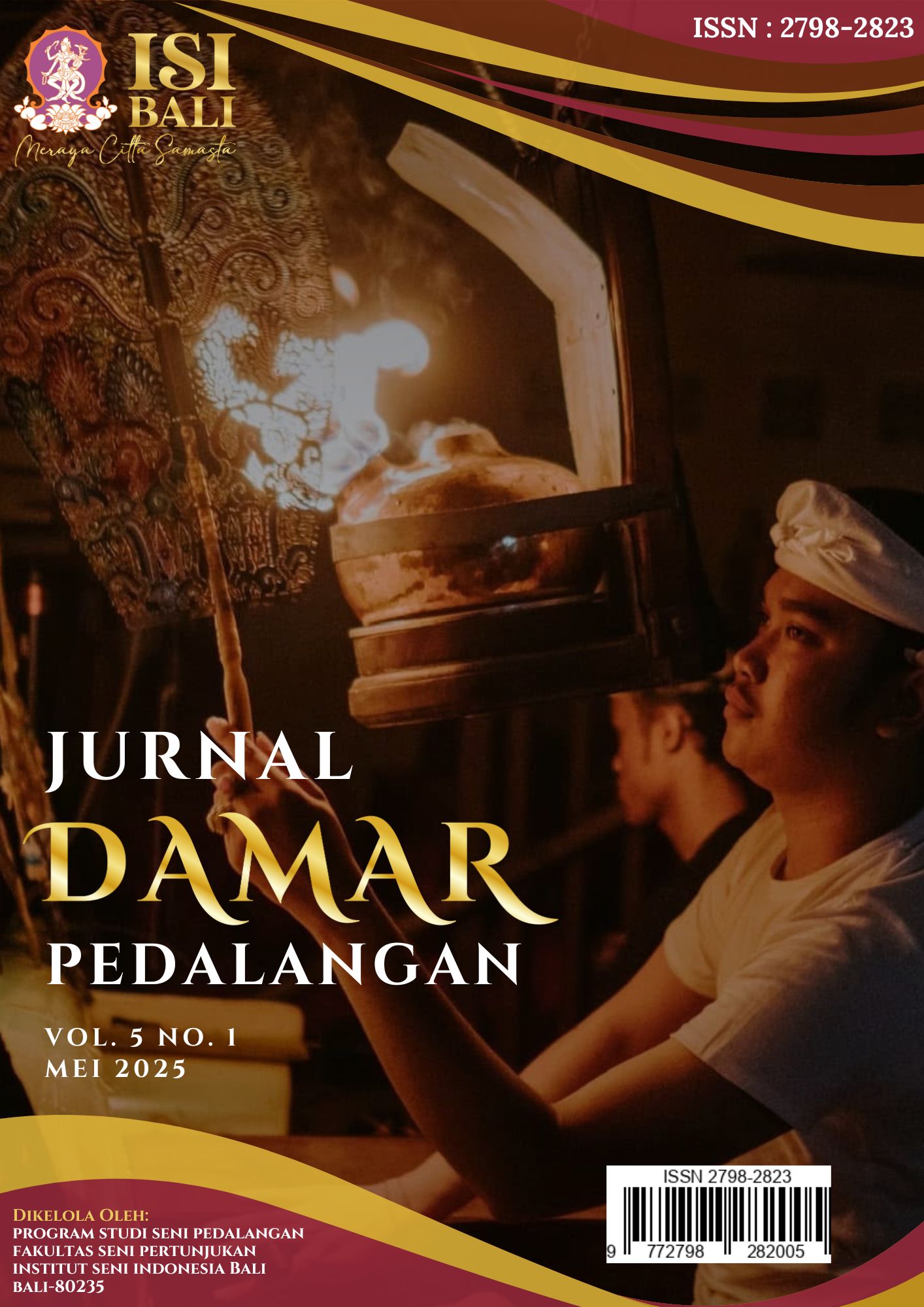PROGRAM MERDEKA BELAJAR KAMPUS MERDEKA MEMBANGUN DESA/KULIAH KERJA NYATA TEMATIK PEMBINAAN KESENIAN GENDER WAYANG DI DESA ADAT KUKUB
DOI:
https://doi.org/10.59997/dmr.v5i1.4881Keywords:
Kuliah Kerja Nyata, Gender Wayang , Pelestarian SeniAbstract
The rapid development of times demands students to possess skills and knowledge relevant to the issues faced by society. In this context, the "Merdeka Belajar Kampus Merdeka" (MBKM) program plays an important role as an innovative learning platform, encompassing various activities such as internships, research, and thematic Community Service (KKN). This research focuses on the Desa Membangun (Village Development) program in Kukub Traditional Village, Bali, which was once known for its art and cultural potential but is currently experiencing a decline in interest among the younger generation towards traditional arts, especially Gender Wayang. The aim of this research is to preserve the traditional art by involving the community in the learning process and the introduction of the art form. The methods used include socialization, training, and field practice. The results of this activity are expected to increase awareness and interest in the community to understand and preserve the Gender Wayang art, while also contributing to the improvement of education and culture in Kukub Traditional Village. This research demonstrates that by involving both students and the community, the preservation of traditional arts can be more effective and sustainable.
Downloads
References
[1] S. S. Kusumawardani dkk., “Buku Panduan Merdeka Belajar Kampus Merdeka,” Dir. Jenderal Pendidik. Tinggi Ris. Dan Teknol., hlm. 98, 2024.
[2] J. Santoso, “Mengatasi Tantangan Keterlibatan Mahasiswa: Strategi Efektif untuk Menciptakan Lingkungan Belajar yang Menarik,” J. Ilm. Kanderang Tingang, vol. 14, no. 2, hlm. 469–478, 2023, doi: 10.37304/jikt.v14i2.267.
[3] A. Pribadiono, “Lembaga Desa Adat Dalam Pembangunan Desa Menurut UU NO. 6 Tahun 2014: Antara Kemandirian Dan Subordinasi Pengaturan,” Lex Jurnalica, vol. 13, no. 6, hlm. 10–22, 2016.
[4] N. P. Hartini, “Konsep Dualistis dalam Pertunjukan Gender Wayang pada Pekan Seni Remaja Kota Denpasar Tahun 2015,” J. Music Sci. Technol. Ind., vol. 4, no. 1, hlm. 37–49, 2021, doi: 10.31091/jomsti.v4i1.1379.
[5] I. W. Suharta dan N. K. Suryatini, “Proses Pembelajaran Gamelan Gender Wayang Bagi Mahasiswa Asing Di Isi Denpasar,” Institut Seni Indonesia Bali, Denpasar, Laporan Penelitian Fundamental Tahun 1, 2013. [Daring]. Tersedia pada: http://repo.isi-dps.ac.id/id/eprint/5235%0Ahttp://repo.isi-dps.ac.id/5235/1/PEMBELAJARAN GENDER WAYANG.pdf
[6] N. P. Hartini dan N. M. Haryati, “Estetika Pertunjukan Gender Wayang secara Virtual,” Tamumatra J. Seni Pertunjuk., vol. 5, no. 2, hlm. 112–121, 2023, doi: 10.29408/tmmt.v5i2.12256.
[7] B. I. M. B. Puser dan H. Santosa, “Pelatihan Gender Wayang Pada Generasi Muda Bali Untuk Melawan Dampak Negatif Kemajuan Teknologi,” Kalangwan J. Seni Pertunjuk., vol. 5, no. 2, Art. no. 2, Nov 2019, doi: 10.31091/kalangwan.v5i2.777.
[8] I. G. P. Sudarta, I. B. W. Bratanatyam, dan I. D. K. Wicaksandita, “Pembinaan Iringan Batel Wayang Wong Di Banjar Pesalakan, Desa Pejeng Kangin, Kecamatan Tampaksiring Kabupaten Gianyar,” Abdi Seni J. Pengabdi. Kpd. Masy., vol. 15, no. 2, hlm. 161–184, 2024.
[9] I. D. K. Wicaksandita, “Wayang Lemah Lakon Kunti Yadnya Pada Upacara Tumpek Wayang Di Isi Denpasar Analisis Struktur Dan Fungsi,” Kayonan J. Pendidik. Seni Dan Budaya, vol. 1, no. 2, hlm. 177–190, 2023.
[10] I. K. Yasa, “Aspek Musikologis Gêndér Wayang dalam Karawitan Bali,” Resital J. Seni Pertunjuk., vol. 17, no. 1, hlm. 46–59, 2017, doi: 10.24821/resital.v17i1.1689.
Downloads
Published
Issue
Section
License
Copyright (c) 2025 I Putu Weda Wikantika, I Ketut Kodi, Sang Nyoman Gede Adhi Santika

This work is licensed under a Creative Commons Attribution 4.0 International License.


